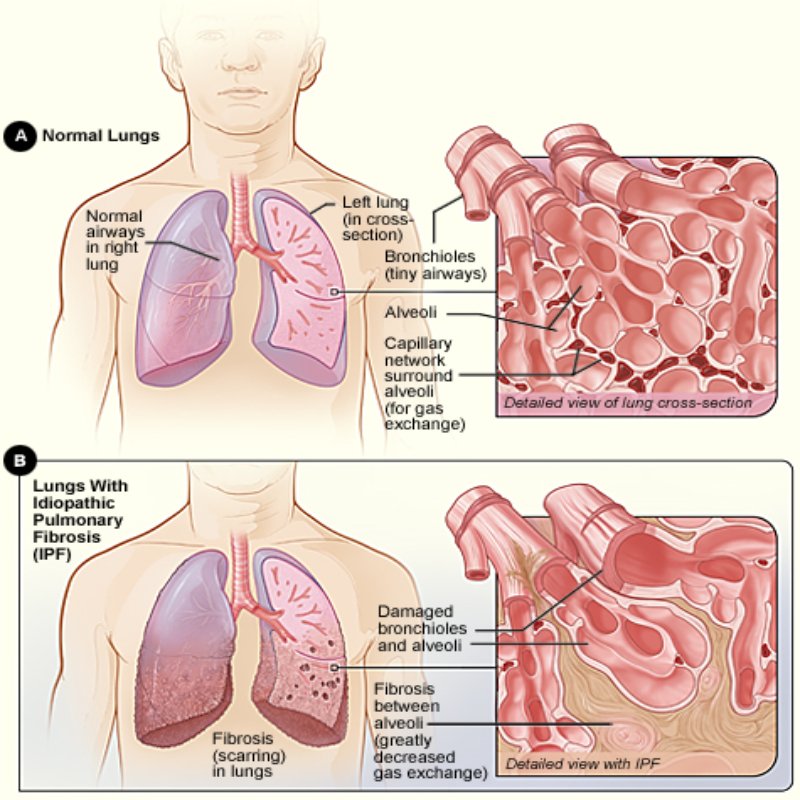What are the therapy options for idiopathic pulmonary fibrosis?
Idiopathic pulmonary fibrosis treatment is diverse. First, a pulmonologist should confirm the diagnosis using a CT scan of the chest, blood tests, spirometry (lung function test), and bronchoscopy. A six-minute walk test is used to determine functional status. If a person is experiencing difficulties breathing, home-based oxygen treatment is administered. Because it improves functional status, pulmonary rehabilitation is an important aspect of therapy. Rehabilitation comprises breathing exercises, nutrition, occupational training, and psychological support, all of which are necessary for the patient’s well-being.

Medication includes drugs like:
- Nintedanib and
- pirfenidone which are anti-fibrotic.
The medicine I’d want to promote is pirfenidone. They don’t reverse the fibrosis but can halt the process.
GM Sanjivani is a Pirfenidone Bulk pharma Exporter, Pirfenidone third-party contract manufacturer specialized in all kinds of generic drugs.
Following the commencement of medications, regular monitoring of liver and kidney function tests is required. Acute exacerbation (disease worsening) should be treated in a hospital. Lung transplantation is the last option of treatment, which is performed by various centres throughout the world.
Many exploratory medicines, such as stem cell therapy and biologicals, are in the works.
The treatment of the sickness necessitates the assistance of doctors and family members, as it can be distressing for the sufferer.

